Related Research Articles

Die Meistersinger von Nürnberg, WWV 96, is a music drama, or opera, in three acts, by Richard Wagner. It is the longest opera commonly performed, taking nearly four and a half hours, not counting two breaks between acts, and is traditionally not cut. With Hans von Bülow conducting, it was first performed on 21 June 1868 at the National Theater in Munich, today home of Bavarian State Opera.
Czech nobility consists of the noble families from historical Czech lands, especially in their narrow sense, i.e. nobility of Bohemia proper, Moravia and Austrian Silesia – whether these families originated from those countries or moved into them through the centuries. These are connected with the history of Great Moravia, Duchy of Bohemia, later Kingdom of Bohemia, Margraviate of Moravia, the Duchies of Silesia and the Crown of Bohemia, the constitutional predecessor state of the modern-day Czech Republic.

Croatian nobility was a privileged social class in Croatia during the Antiquity and Medieval periods of the country's history. Noble families in the Kingdom of Croatia included high ranking populates from Slavonia, Dalmatia, Istria, and Republic of Ragusa. Members belonged to an elite social hierarchy, normally placed immediately behind blood royalty, that possessed considerably more privileges or eminence than most other classes in a society. Membership thereof typically was often hereditary. Historically, membership in the nobility and the prerogatives thereof have been regulated or acknowledged by the monarch. Acquisition of sufficient power, wealth, military prowess or royal favour enabled commoners to ascend into the nobility. The country's royalty was heavily influenced by France's nobility resulting members of the Royal Courts to assume French titles and practices during French occupation. The controversial assumption of French practices contributed to wide spread political and social elitism among the nobles and monarch. The nobility regarded the peasant class as an unseen and irrelevant substrata of people which lead to high causality revolts and beheadings as well as sporadic periods of intense domestic violence.

Prince Hans Ulrich von Eggenberg was an Austrian statesman, a son of Seyfried von Eggenberg, Lord of Erbersdorf (1526–1594), and great-grandson of Balthasar Eggenberger. He was a prominent member of the House of Eggenberg and gained the title of Duke of Krumau.

Nicola Frangipani in croatian language Nikola IV Frankopan was a Croatian nobleman and the Ban of Croatia and Dalmatia from 1426 to 1432.
Ferdinand Augustin Haller von Hallerstein, also known as August Allerstein or by his Chinese name Liu Songling, was a Jesuit missionary and astronomer from Carniola. He was active in 18th-century China and spent 35 years at the imperial court of the Qianlong Emperor as the head of the Imperial Astronomical Bureau and Board of Mathematics. He created an armillary sphere with rotating rings at the Beijing Observatory and was the first demographer in China who precisely calculated the exact number of Chinese population of the time (198,214,553). He also participated in Chinese cartography, serving concurrently as a missionary, "cultural ambassador" and mandarin between 1739 and 1774.

Anton Koberger was the German goldsmith, printer and publisher who printed and published the Nuremberg Chronicle, a landmark of incunabula, and was a successful bookseller of works from other printers. In 1470 he established the first printing house in Nuremberg. Koberger was the godfather of Albrecht Dürer, whose family lived on the same street.

Johann Carl Christoph Wilhelm Joachim Haller von Hallerstein was a German architect, archaeologist and art historian.

Ernst Ludwig von Gerlach was a Prussian politician, editor and judge. He is considered one of the main founders and leading thinkers of the Conservative Party in Prussia and was for many years its leader in the Prussian House of Representatives. Like his brother Leopold von Gerlach, he belonged to the circle that formed around the Neue Preußische Zeitung, better known as the Kreuzzeitung, in the founding of which he also played a leading role.
Hallerstein is a surname. Notable people with the surname include:
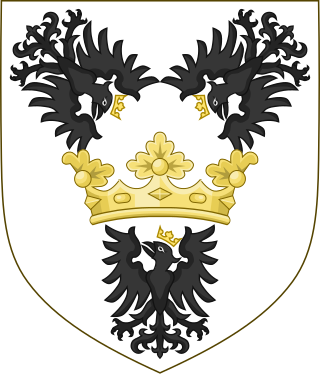
The House of Eggenberg was the name of an influential Austrian noble family from Styria, who achieved princely rank in the 17th century. The family's last male heir died in 1717, bringing an end to the House of Eggenberg.

Christian Freiherr von Stetten is a Swiss-German businessman and politician of the Christian Democratic Union of Germany (CDU). He has served as Member of the Parliament of Germany, the Bundestag, since 2002. He represents the constituency of Schwäbisch Hall-Hohenlohe, and succeeded his father Wolfgang von Stetten as the Member of Parliament from that constituency.
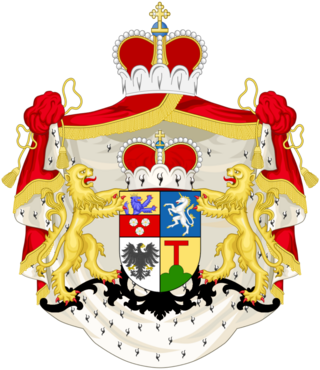
The Henckel von Donnersmarck family is an Austro-German noble family that originated in the former region of Spiš in Upper Hungary. The founder of the family was Henckel de Quintoforo in the 14th century. The original seat of the family was in Donnersmarck, which was then within the Kingdom of Hungary but is now part of Slovakia. The family was ennobled in 1607 by Rudolf II, Holy Roman Emperor. Members of the family were granted other noble titles and privileges in 1636 by Ferdinand II, Holy Roman Emperor, in 1651 by Ferdinand Charles, Archduke of Austria, in 1661 by Leopold I, Holy Roman Emperor, and in 1901 by Wilhelm II, German Emperor. In 1531, the family moved to Silesia. They were expelled from Silesia, along with other German families, in 1945 by the Soviet Army and settled in Germany and Austria.

The House of Khevenhüller is the name of an old and important Carinthian noble family, documented there since 1356, with its ancestral seat at Landskron Castle. In the 16th century, the family split into the two branches of Khevenhüller-Frankenburg, Imperial Counts from 1593, and Khevenhüller-Hochosterwitz, raised to Imperial Counts in 1725 and, as Khevenhüller-Metsch, to princely rank (Fürsten) in 1763. The family belongs to high nobility.

Abel Socin was a Swiss merchant, politician, law lord (Gerichtsherr) and diplomat from Basel. He was a member of the Grand Council of Basel and served as the envoy of the Swiss Confederation to the French court from 1679.
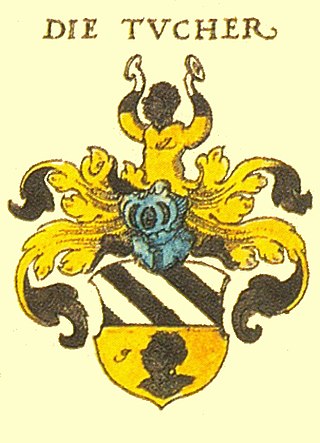
Tucher von Simmelsdorf is a noble patrician family from Nürnberg. Like the Fugger and Welser families from Augsburg, their company ran trading branches across Europe between the 15th and 17th centuries, although on a somewhat smaller scale. The Protestant family played an import part in the economical and cultural development as well as in local politics. They were admitted to the governing council of the free imperial city since 1340, a hereditary privilege, and listed in the Dance Statute. After the acquisition of Simmelsdorf Castle in 1598, the family was named Tucher von Simmelsdorf and ennobled in 1697. In 1815, they became Bavarian barons.
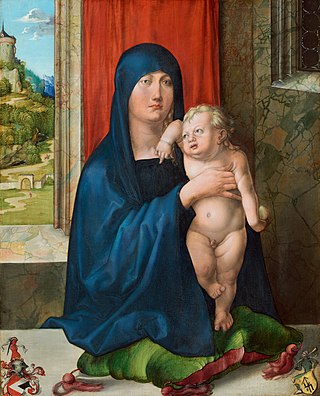
Haller von Hallerstein is a noble patrician family from the Free Imperial City of Nuremberg which belonged to the wealthy ruling oligarchy during Nuremberg's Golden Age in the Late Middle Ages and the Renaissance.

The Pfinzing von Henfenfeld were one of the oldest patrician families in the imperial city of Nuremberg. They are first mentioned in a document in 1233 and were represented in the inner council from the beginning of the council records in 1274 until their extinction in 1764. This made them the oldest Nuremberg council family. According to the dance Statute of 1521 belonged to the twenty old lines eligible for Ratsfähigen. In 1764 the male line died out.
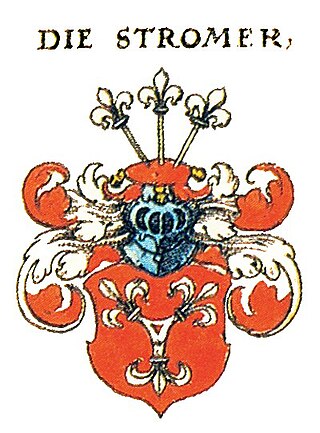
The Stromer von Reichenbach are one of the oldest patrician families of the Imperial City of Nuremberg, first mentioned in a document in 1254. The Stromers were represented in the Inner Council from the beginning of the tradition in 1318, with longer interruptions in the 16th and 17th centuries, until the end of the Imperial City period in 1806, and according to the Dance Statute they belonged to the twenty old councilable families.
References
- ↑ "Haller von Hallerstein, Ruprecht - Deutsche Biographie".
- ↑ Geschlechtsregister des Hochadelichen Patriciats zu Nürnberg: welches aus denen bewährtesten Urkunden, Kauf- Lehen- und Heyrathsbriefen, gesammleten Grabschriften und eingeholten genauen Nachrichten von innen beschriebenen Gräflich-Freyherrlich- und Edlen Häusern in gegenwärtige Ordnung verfasset und richtig zusammen getragen worden
- ↑ erudition, candour of mind and true nobility